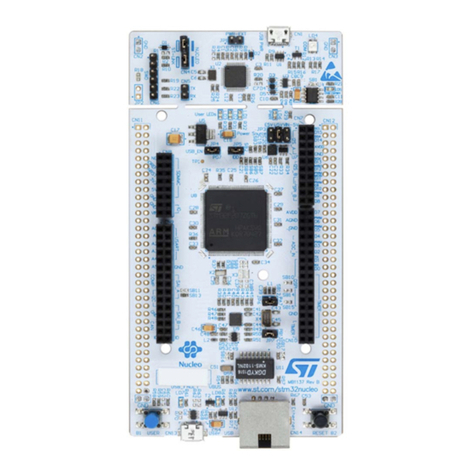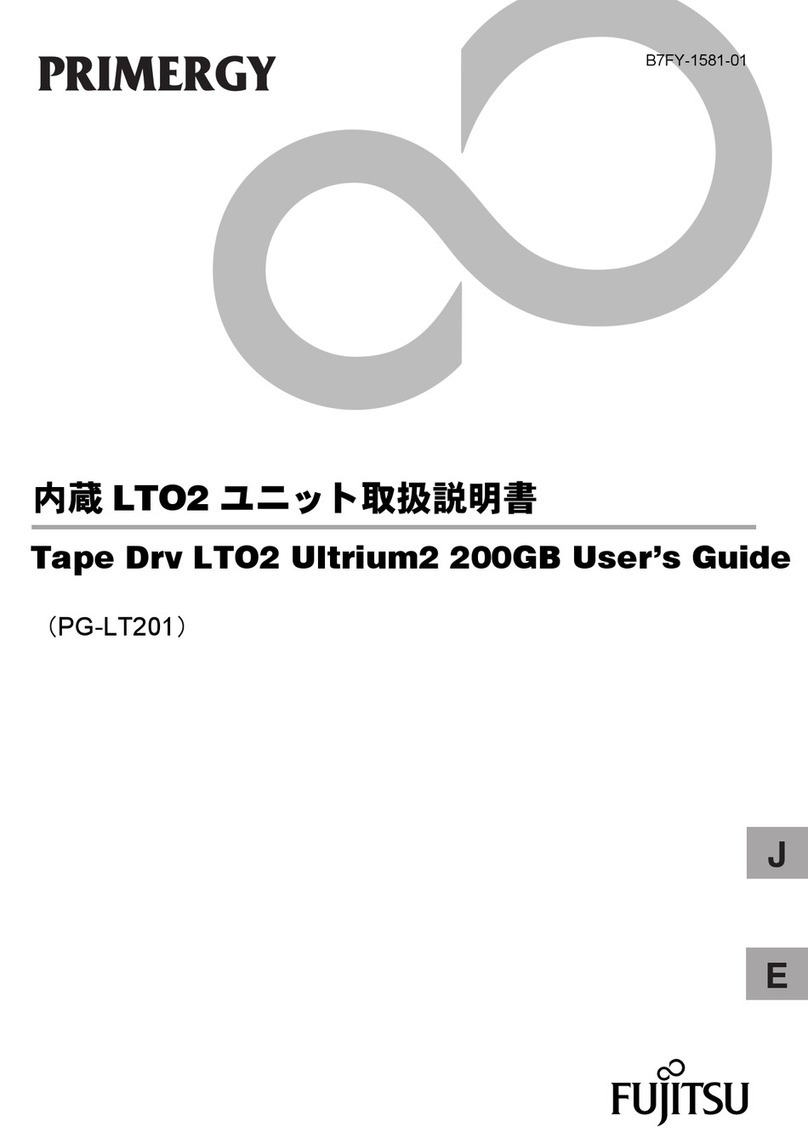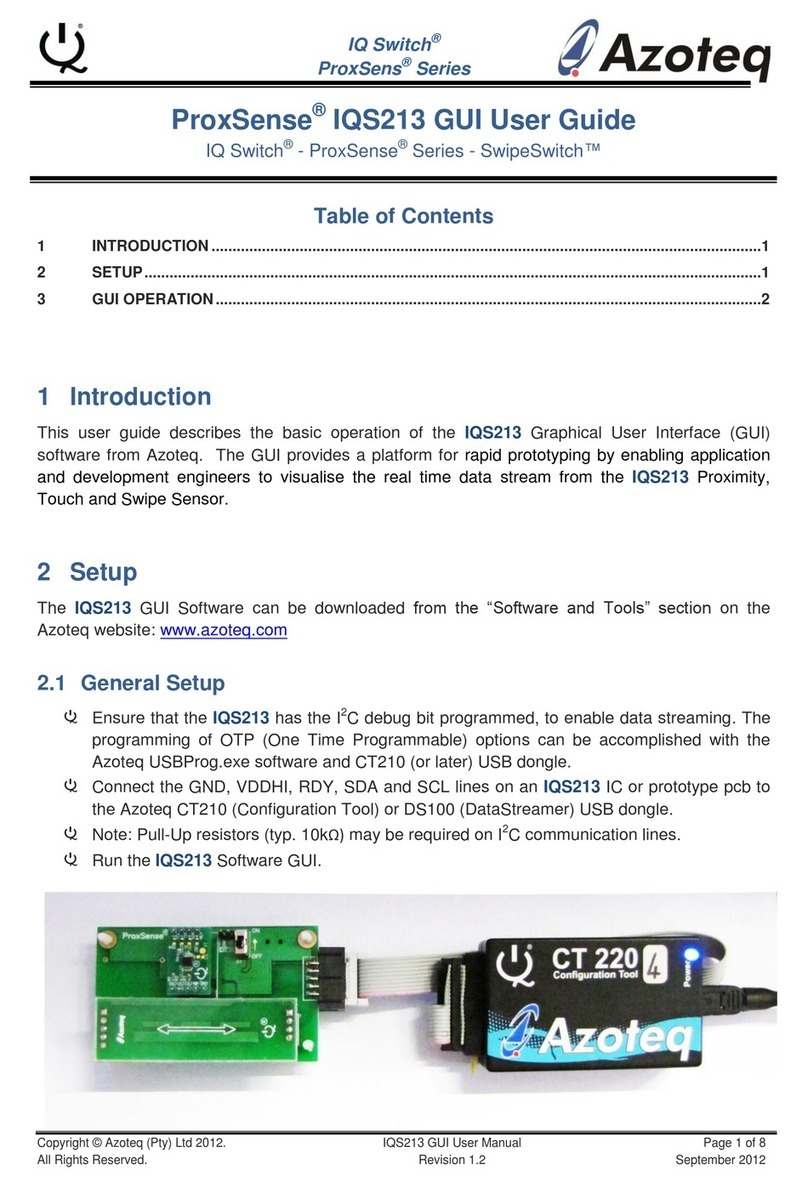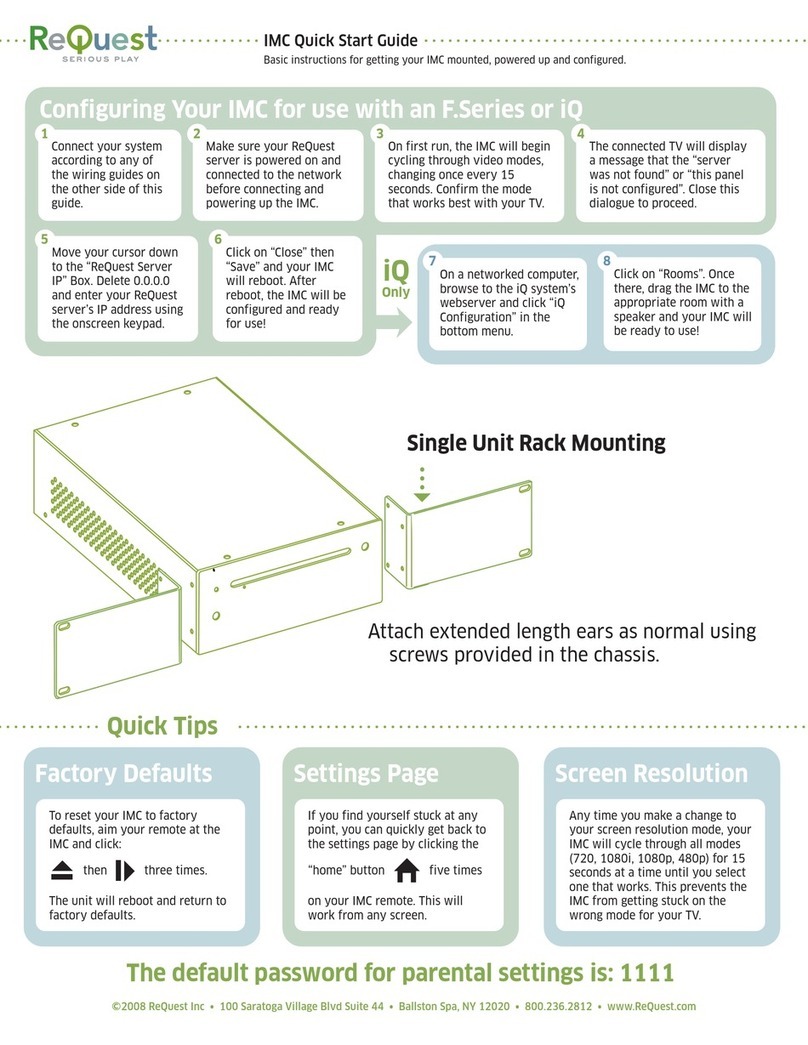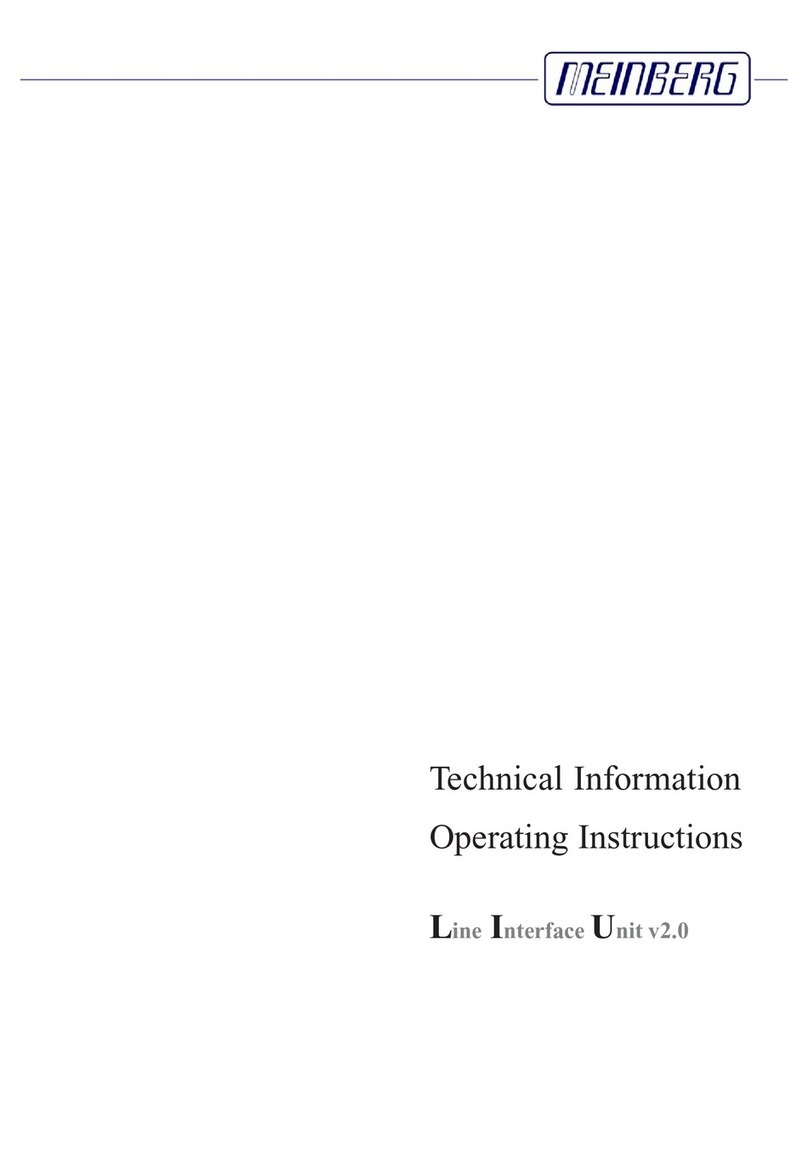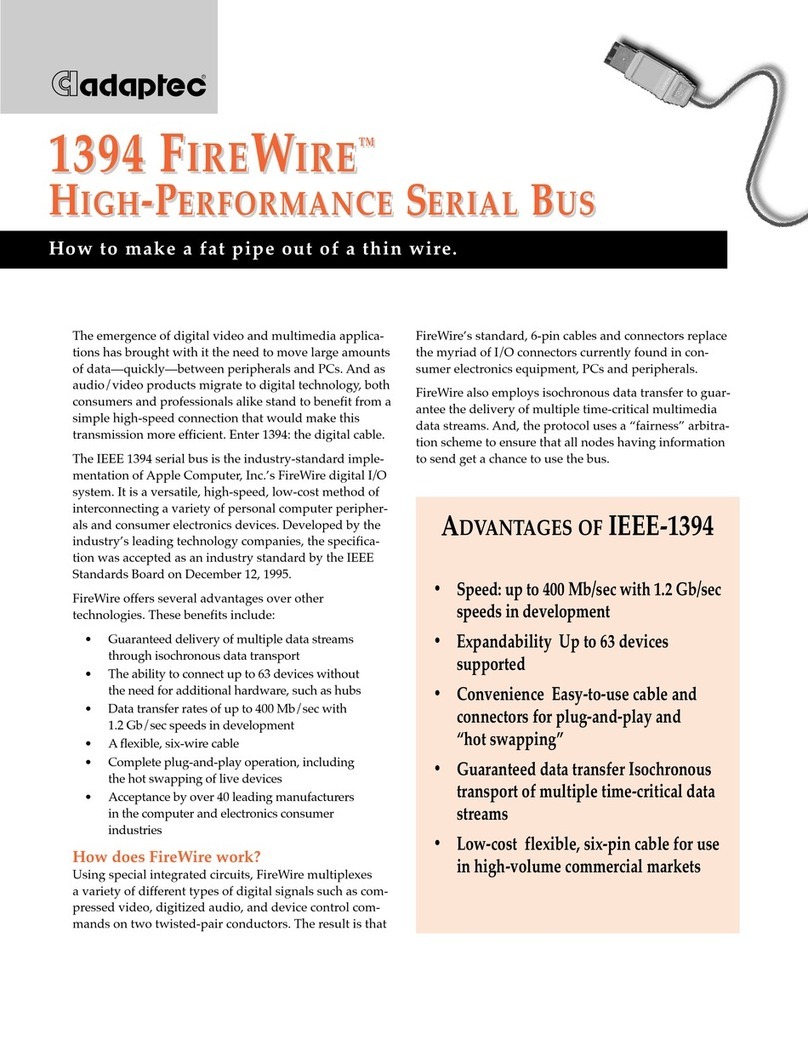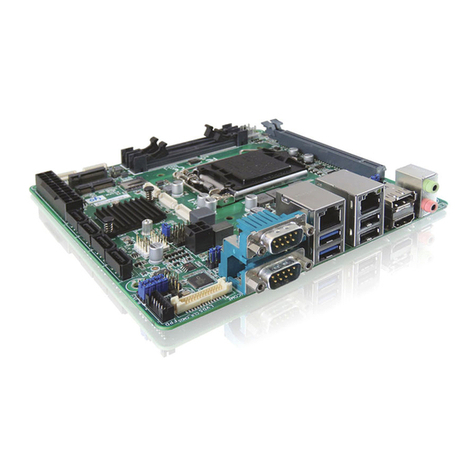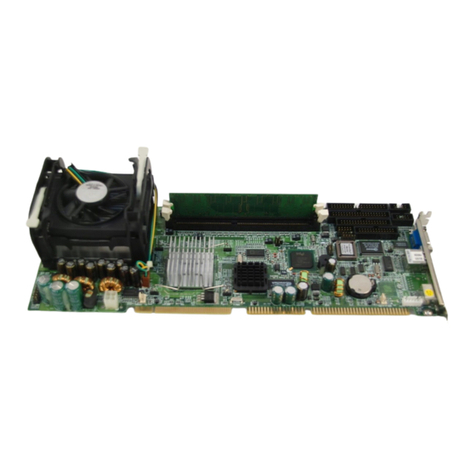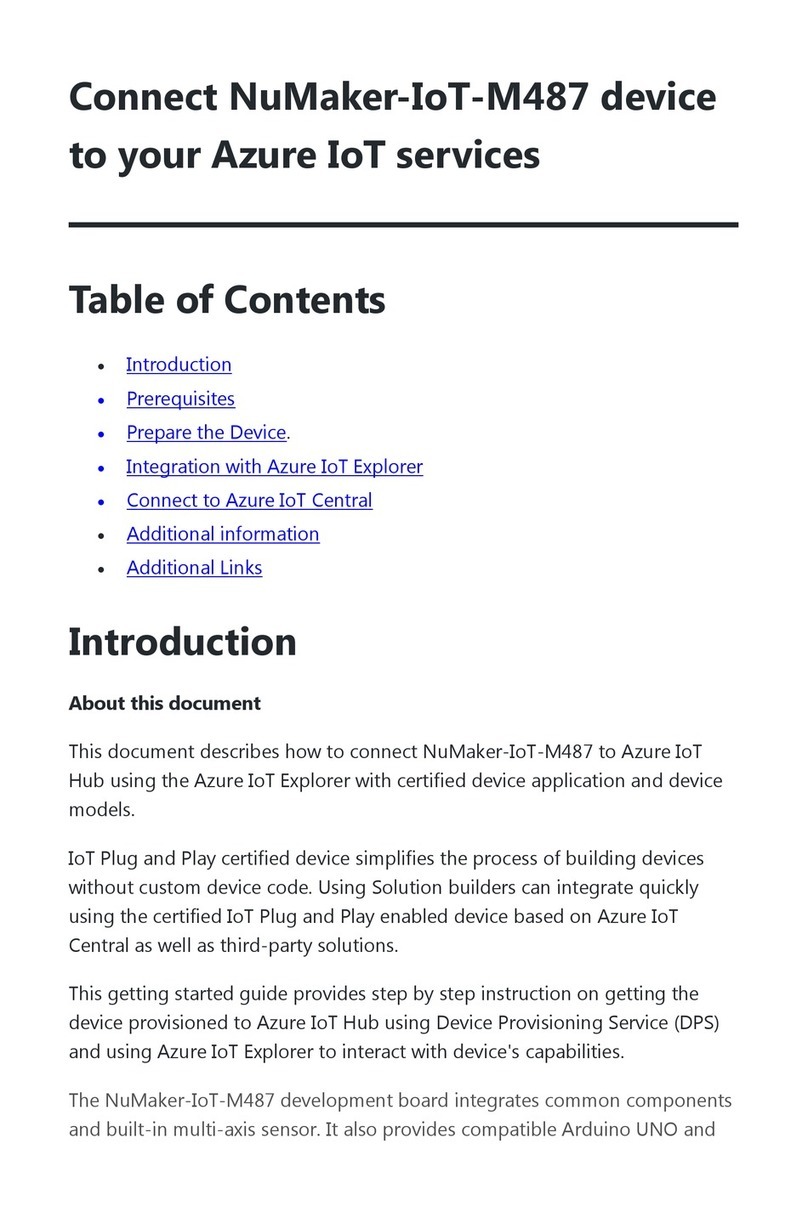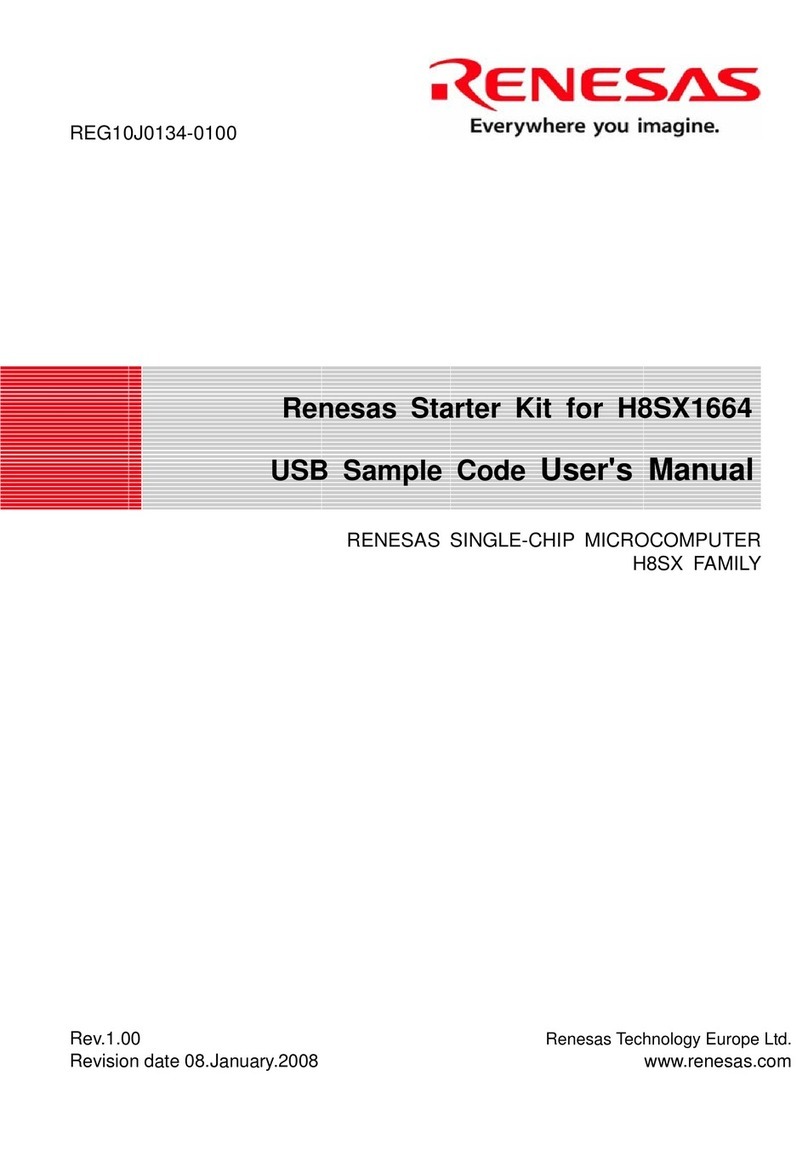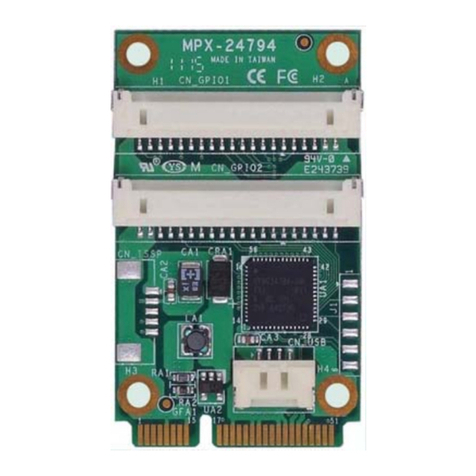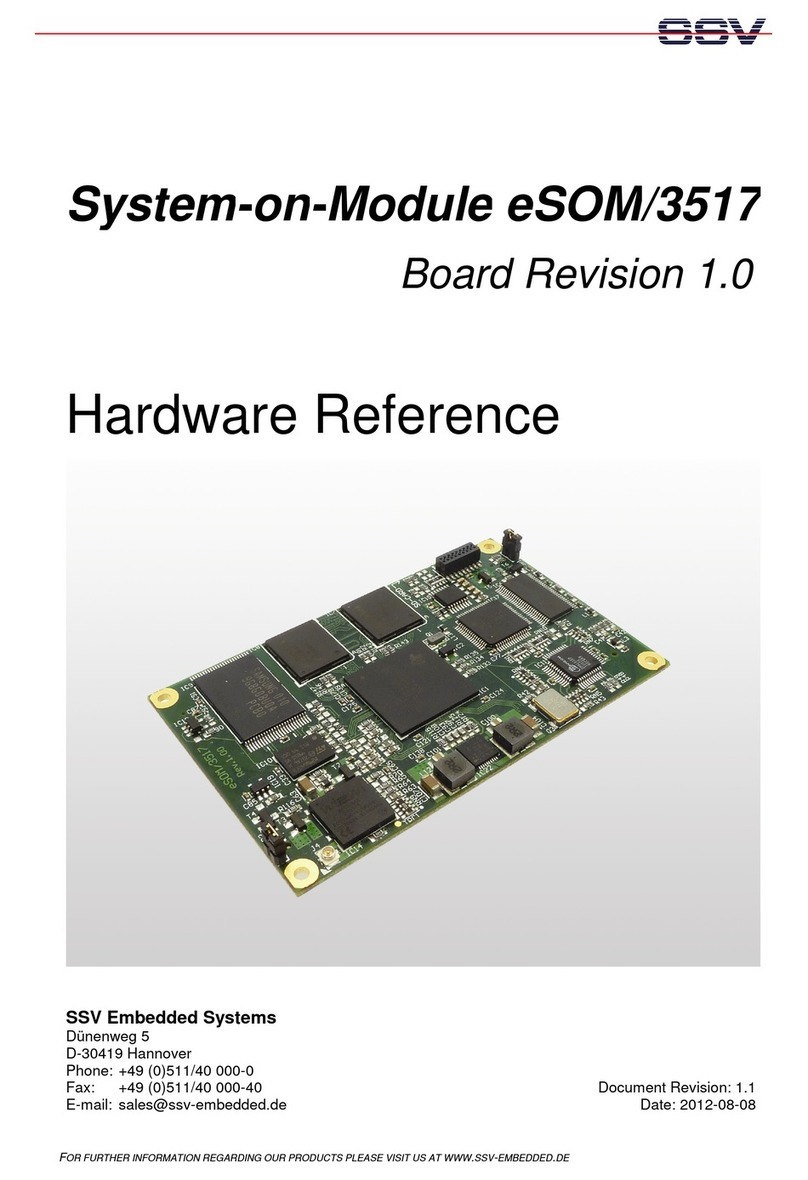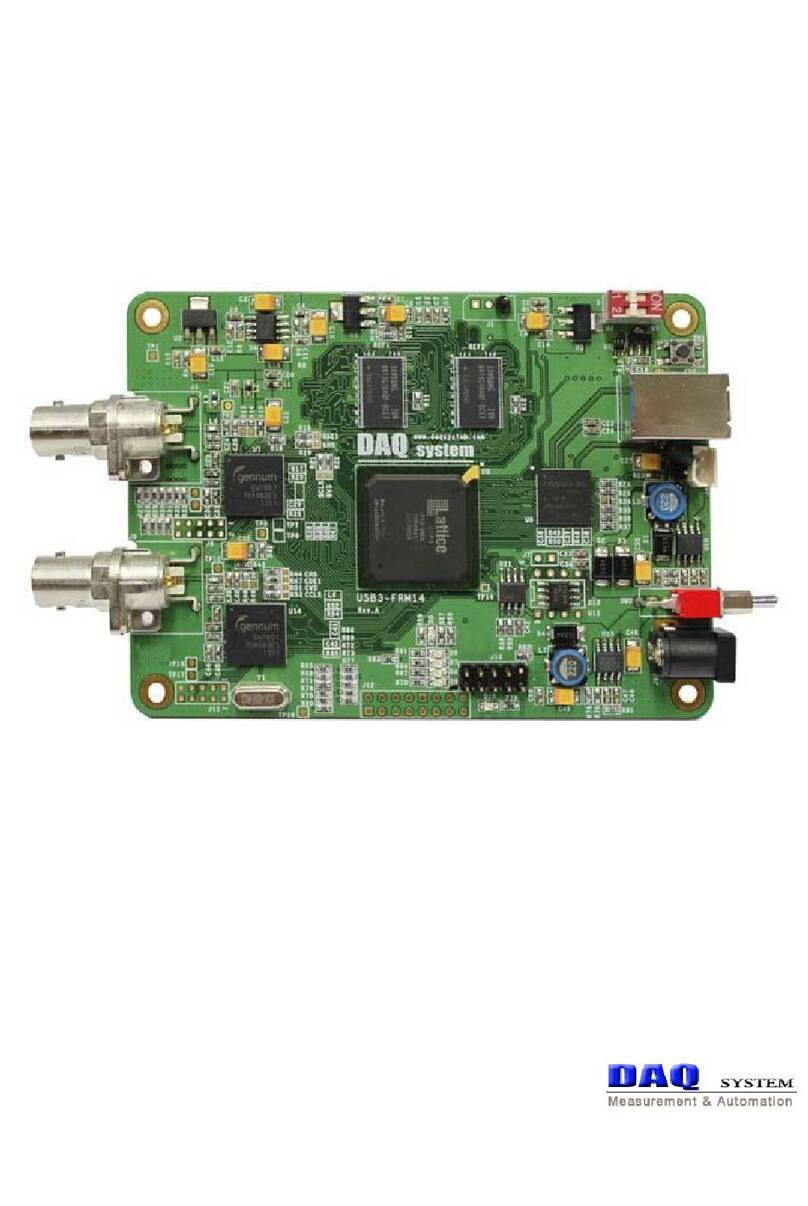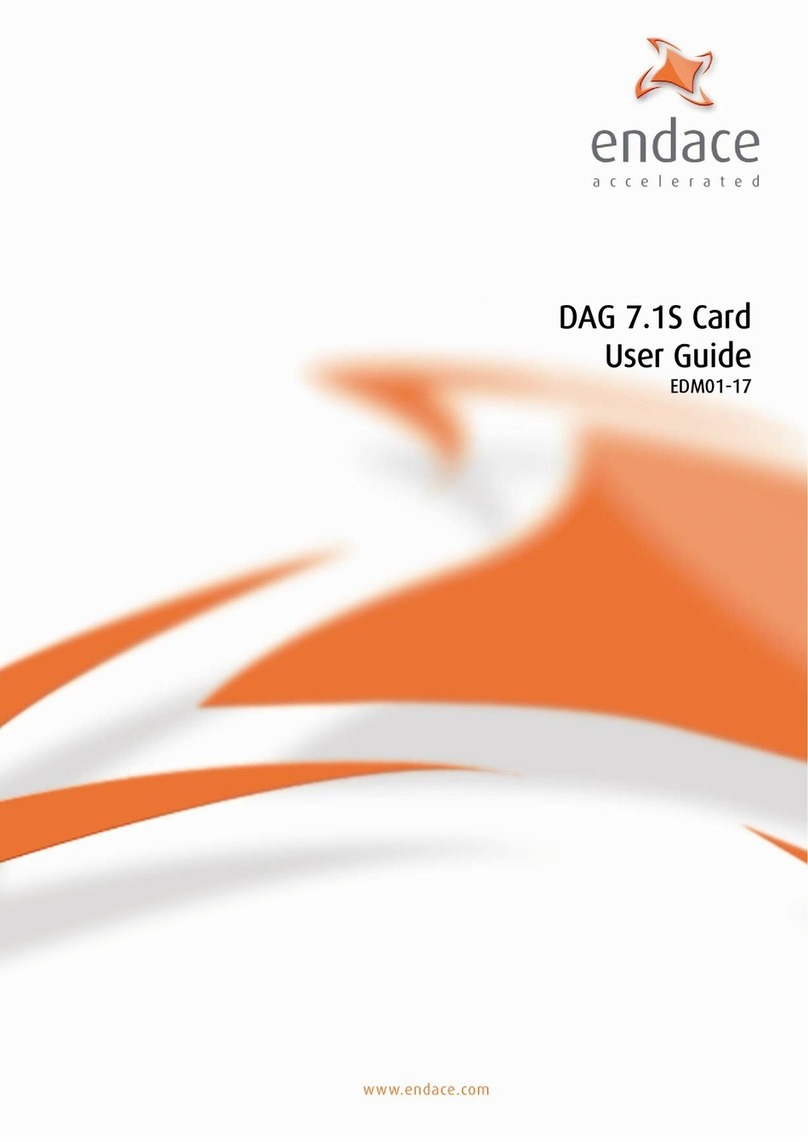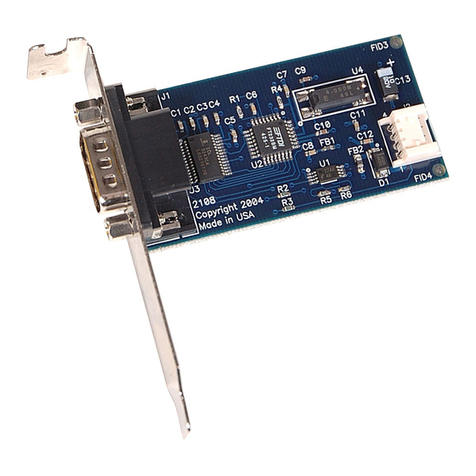Fivemere SBU14C User manual

SBU Systems
User Manual
Fivemere Ltd.
Unit 1, Heron Industrial Estate
Basingstoke Road
Spencers Wood
Reading, Berks, RG7 1PJ
United Kingdom
Telephone: [44] (0) 118 988 0082
Fax: [44] (0) 118 988 0081

SBU SystemsUser Manual
80-30200000-03ii
Publication — 80-30200000-03
Publication Notice:
This manual has been compiled and checked for accuracy. However the
information contained in this manual does not constitute a warranty of
performance. Fivemere Limited reserves the right to revise this
publication from time to time without notice. Fivemere Limited assumes
no liability for losses incurred as a result of out-of-date or incorrect
information contained in this manual.
Proprietary Notice:
©1996-1999, Fivemere Ltd, all rights reserved.
This document may not in whole or part be copied, photocopied,
reproduced, translated, or reduced to any electronic medium or machine-
readable form without prior consent from Fivemere Limited.
EMC Directive:
This product has been designed for use in Commercial and Light
Industrial environments and tested to relevant EMC Standards as listed
in the European O.J. All testing was carried out using screened
interconnection cables. Should the equipment be used in a different
environment the user may need to take additional EMC precautions.
Fivemere Ltd. is a subsidiary of Cabletron Systems Inc., USA.

SBU SystemsUser Manual
80-30200000-03 iii
History Sheet
80-30200000-01 First Edition March 1996
80-30200000-02 Cabletron Systems Ltd 29 April 1997
80-30200000-03 Fivemere Ltd version,
SBULSM section added 19 October 1999

SBU SystemsUser Manual
80-30200000-03iv
TABLE OF CONTENTS
1. SCOPE AND INTRODUCTION 1-1
1.1 SCOPE 1-1
1.2 INTRODUCTION 1-1
1.3 THE SBU14C 1-2
1.4 THE SBU6C 1-3
2. INSTALLATION AND CABLING 2-1
2.1 MAINS INPUT AND WIRING 2-1
2.2 SUPPLY RATINGS AND FUSING 2-3
2.2.1 SBU14C 2-3
2.2.2 SBU6C 2-4
2.3 POWER SUPPLY CAPACITIES/REDUNDANCY 2-5
2.3.1 SBU14C 2-5
2.3.2 SBU6C 2-6
3. OVERVIEW OF SHELF MODULES 3-1
3.1 POWER SUPPLIES 3-1
3.1.1 SBU14C 3-1
3.1.2 SBU6C 3-1
3.2 COOLING 3-2
3.2.1 SBU14C 3-2
3.2.2 SBU6C 3-2
3.3 GENERIC SHELF MANAGER MODULE (SBUGSM) 3-2
3.4 LAN SHELF MANAGER MODULE (SBULSM) 3-2
3.5 GENERIC PORT SHARER MODULE (SBUGPS) 3-2
4. GENERIC SHELF MANAGER MODULE 4-1
4.1 OVERVIEW 4-1
4.2 SHELF POWER LOADING 4-2
4.3 COMMAND ACCESS TO THE SBUGSM 4-3
4.3.1 POLL ADDRESSES AND ALERT FORMAT 4-3
4.3.2 FACTORY DEFAULT 4-5
4.3.3 PASSWORD ENTRY 4-5
4.4 INTERFACES 4-5
4.5 OPERATION MENU (A) 4-6
4.6 CONFIGURATION MENU (B) 4-6
4.6.1 SYSTEM MENU 4-6

SBU SystemsUser Manual
80-30200000-03 v
4.6.2 COMMAND PORT MENU 4-7
4.6.3 ALARM PORT MENU 4-8
4.6.4 ALARMS MENU 4-9
4.7 LOGOUT (C) 4-9
5. LAN SHELF MANAGER MODULE 5-1
5.1OVERVIEW 5-1
5.2 SHELF POWER LOADING 5-3
5.3 COMMAND ACCESS TO THE SBULSM 5-3
5.3.1 POLL ADDRESSES AND ALERT FORMAT 5-3
5.3.2 IP ADDRESS 5-5
5.3.3 FACTORY DEFAULT 5-5
5.3.4 PASSWORD ENTRY 5-5
5.4 INTERFACES 5-5
5.5 OPERATION MENU (A) 5-6
5.6 CONFIGURATION MENU (B) 5-6
5.6.1 SYSTEM MENU 5-7
5.6.2 COMMAND PORT MENU 5-7
5.6.3 ALARM PORT MENU 5-9
5.6.4 ALARMS MENU 5-10
5.6.5 REMOTE PORT MENU 5-11
5.6.6 NUMBER STORE MENU 5-11
5.6.7 LAN MENU 5-11
5.7 LOGOUT (C) 5-14
6. GENERIC PORT SHARER 6-1
6.1 PHYSICAL REQUIREMENTS 6-1
6.2 PANEL LAYOUTS 6-1
6.3 SHELF POWER LOADING 6-3
6.4 FUNCTIONAL DESCRIPTION 6-3
6.5 PHYSICAL INTERFACE 6-3
6.6 CARD JUMPERS 6-4
7. SHELF SPECIFICATIONS 7-1
7.1 SBU14C 7-1
7.2 SBU6C 7-2
8. CABLING DIAGRAMS 8-1
8.1 PC 9 WAY TO SBUGSM/SBULSM 8-1
8.2PC 25 WAY TO SBUGSM/SBULSM 8-2

SBU SystemsUser Manual
80-30200000-03vi
8.3 PC 25 WAY TO SBUGPS MASTER PORT 8-2
8.4 SBUGPS CHANNEL TO SBUGSM/SBULSM 8-3
8.5PC 9 WAY TO SBUGPS MASTER 8-3
9. GLOSSARY OF TERMS 9-1

Scope and Introduction
80-30200000-03 1-1
1. Scope and Introduction
1.1 Scope
This manual provides user information for both the Fivemere SBU14C
and the SBU6C. Although there is indeed no actual ‘operation’ of these
shelves, it is necessary to understand their functionality both from the
point of view of the services they provide as a host to shelf-mounted
products.
These products were previously known as CBU/14 and CBU/6.
1.2 Introduction
Both shelves allow for dense concentration of Fivemere communications
products together with centralised management, alarm reporting, and
resilient Power Supplies. They are designed to accept present and
future Fivemere Shelf mounting products. These products are designed
to be on line compatible with the earlier Fivemere ISDN products.

SBU SystemsUser Manual
80-30200000-031-2
1.3 The SBU14C
The SBU14C fits into a standard 19” cabinet system. There are
positions for 14 cards in all, including the SBUGSM or SBULSM.
Cooling is provided for the shelf by fans in the PSUs. If only one or two
PSUs are fitted, then PSU blank panels must be fitted to the empty slots.
An illustration of the layout of the SBU14C and the flow of cooling air
through it, is shown in Figure 1:-
A
A
Fans Air flow
Front
(Application)
Card
Rear
(Interface)
Card
IEC
Connector
Section through ‘AA’
PSU
FIVEMERE FIVEMERE FIVEMERE
Figure 1 SBU14C
Each power inlet individually feeds each power supply module.

Scope and Introduction
80-30200000-03 1-3
1.4 The SBU6C
The SBU6C is designed to be either a ‘Desk Top’ unit, a ‘Tower’ unit
under a desk, or a shelf mounted unit In a standard 19” cabinet (by the
addition of mounting ‘ears’).
There are positions for 6 cards in all, including the SBUGSM or
SBULSM.
When operating in ‘Desk Top’ or ‘Tower’ modes, plastic feet are supplied
on the relevant face of the enclosure.
Cooling is provided by a permanently installed fan (
i.e.
not in the PSUs).
An illustration of the layout of the SBU6C is shown in Figure 2:-
A
AFan
Air
Front
(Application)
Cards
Rear
(Interface)
Cards
Section
through
‘AA’
PSUs
Acrylic
Cover
IEC
Mains
Inlet
Air
Figure 2 SBU6C
Each power inlet individually feeds each power supply module.

Installation and Cabling
80-30200000-03 2-1
2. Installation and Cabling
The SBU14C is a high density rack mounted unit designed to sit in a 19"
communications cabinet. It has eight fixing points, four down each side
of the front of the frame. All eight fixing points must be securely fixed to
the frame.
The SBU6C can be rack mounted by the addition of rack mounting ears.
The ears must be securely fixed to the frame.
2.1 Mains Input and Wiring
On the rear of the unit there are three IEC mains sockets (for SBU14C)
or two IEC mains sockets (for SBU6C) for connection to independent
mains supplies. The primary earth connection is made via these
sockets.
WARNING - these appliances must be earthed.
VORSICHT - Nur eine vorschriftsmäßig geerdete Steckdose
anschließen.
Mains cables, 2 metres in length are supplied with both units. These
should be connected to a suitable mains supply. The mains plug is the
primary disconnect device for the unit. Ensure that the unit is installed
near to socket outlets and that the outlets are easily accessible.
The mains cables supplied with the unit are fitted with moulded 13 amp
plugs for connection to standard socket outlets. Should the plugs not be
of the correct type for the outlets that they are connected to, the plugs

SBU SystemsUser Manual
80-30200000-032-2
should be removed and the cable re-wired to the correct type of plug.
The use of adaptors is not recommended.
The wires in the supply cord are coloured in accordance with the
following code:-
Green and Yellow Earth
Blue Neutral
Brown Live
As these colours may not correspond with the terminations in the plug
being used, it should be connected as follows:-
The green and yellow wire must be connected to the terminal marked
with the letter E, or with the earth symbol, or coloured green, or coloured
green and yellow.
The blue wire must be connected to the terminal marked with the letter
N, or coloured black, or coloured blue.
The brown wire must be connected to the terminal marked with the letter
L, or coloured red, or coloured brown.
All data communications links to the frame should be in accordance with
the cable specifications given in the appropriate manual for each card
type. The rear panel connectors have been fitted with 4-40 screw-locks.
WARNING:
Only connect apparatus complying with the requirements of
SELV in accordance with clause 2.3 of EN 60 950 to the
connector ports on the backplane.
Geräte nur in Übereinstimmung mit den Anforderungen der
SELV entsprechend Absatz 2.3 der EN 60 950 an den
Anschlußbuschen der rückwärtigen Platte anschliessen.

Installation and Cabling
80-30200000-03 2-3
2.2 Supply Ratings and Fusing
WARNING:
1. Caution - for continued protection against risk of fire,
replace only with same type and rating of fuse.
Achtung - für fortwärenden Schutz vor Feuergefahr nur
Sicherungen derselben Art und derselben Auslegung
einsetzen.
2. The Shelf should be professionally installed by a competent
engineer. There are no operator serviceable parts inside
the unit and it should only be opened by a qualified service
engineer. The mains supply should be disconnected before
accessing the interior.
Gefäh! Bereich. Nur für fachpersonal. Nicht öffnen
berührungsgefahr!
3. Where the Shelf is not completely complemented with
application cards, blank panels must be fitted to all vacant
slots both front and rear for user safety and EMC
compliance reasons.
2.2.1 SBU14C
The unit can be connected to supplies of the following voltage ranges:-
a) 90VAC to 132VAC (110 to 120V Nominal)
b) 180VAC to 264VAC (220 to 240V Nominal)
Supply frequencies, in all cases, can be in the range 48Hz to 62Hz.
The maximum power consumption of each power supply unit is 200
watts. The current requirement for each of the voltage ranges is:-
a) 1A max.
b) 0.5A max.
Ideal mains inlet fuse rating:
20mm x 5mm, 2AH, 250V Anti-surge (T) type for 110V to 120V and
220V to 240V ratings.

SBU SystemsUser Manual
80-30200000-032-4
Ideal power supply fuse rating:
20mm x 5mm, 3.15AH, 250V Anti-surge (T) type for 110V to 120V and
220V to 240V ratings.
2.2.2 SBU6C
The unit can be connected to supplies of the following voltage range:-
93VAC-264VAC (110 to 120V, and 220 to 240V Nominal voltages)
Supply frequencies, in all cases, can be in the range 47Hz to 63Hz.
The maximum power consumption of each power supply unit is 80 watts.
The current requirement for each of the voltage ranges is:-
0.8A for 110 to 120V range
0.4A for 220 to 240V range.
Ideal mains inlet fuse rating:
20mm x 5mm, 2.5AH, 250V Anti-surge (T) type for 110V to 120V and
220V to 240V ratings.
Ideal power supply fuse rating:
20mm x 5mm, 2.5AH, 250V Anti-surge (T) type for 110V to 120V and
220V to 240V ratings.

Installation and Cabling
80-30200000-03 2-5
2.3 Power Supply Capacities/Redundancy
2.3.1 SBU14C
Up to 3 power supplies can be fitted to the 19” Shelf system. Each one
is capable of providing the complete Shelf power requirement (at 120W).
It’s a matter of choice whether one, two or three PSUs are fitted, such
decision generally being based upon the redundancy/reliability versus
the load requirement of the equipment fitted.
The SBU14C can therefore operate in the following modes with one, two
or three PSUs :-
No of PSUs Power
Requirement Redundancy status
One PSU 120W no redundancy
Two PSUs 120W full redundancy
Two PSUs 240W no redundancy
Three PSUs 240W full Redundancy
Three PSUs 360W no redundancy
The above ratings reflect the overall output capacity of the supply.
Each of the SBU14C power supply modules can deliver the following
maximum currents:
+5V +12V -12V
10A 6.5A 1A
When installing cards into the SBU14C, the installation engineer must
ensure that the shelf power supplies’ combined outputs can meet both
the overall power requirements and the individual rail current
requirements of all the cards in the shelf. (Please refer to the relevant
manuals for this information on the cards). This is true whether allowing
for redundancy or not.

SBU SystemsUser Manual
80-30200000-032-6
2.3.2 SBU6C
Up to 2 power supplies can be fitted to the SBU6C. Each one is capable
of providing the complete Shelf power requirement (at 50W). It’s a
matter of choice whether one or two PSUs are fitted, such decision
generally being based upon the redundancy/reliability versus the load
requirement of the equipment fitted.
The SBU6C can therefore operate in the following modes with one or two
PSUs :-
No of PSUs Power
Requirement Redundancy status
One PSU 50W no redundancy
Two PSUs 50W full redundancy
Two PSUs 100W no redundancy
The above ratings reflect the overall output capacity of the supply.
Each of the SBU6C power supply modules can deliver the following
maximum currents:
+5V +12V -12V
5A 1A 1A
When installing cards into the SBU6C, the installation engineer must
ensure that the shelf power supplies’ combined outputs can meet the
individual rail current requirements of all the cards in the shelf. (Please
refer to the relevant manuals for this information on the cards). This is
true whether allowing for redundancy or not.

Overview of Shelf Modules
80-30200000-03 3-1
3. Overview of Shelf Modules
This section is intended to provide a brief overview of standard
equipment fitted in the SBU6C and SBU14C Shelf Systems.
3.1 Power Supplies
3.1.1 SBU14C
Up to 3 power supplies can be fitted to the SBU14C. Each one capable
of providing the complete Shelf power requirement (at 120W) It’s a
matter of choice whether one, two or three PSUs are fitted, such decision
generally being based upon the redundancy/reliability versus the load
requirement of the equipment fitted.
Please see section 2.3 for more information on this.
3.1.2 SBU6C
Up to 2 power supplies can be fitted to the SBU6C. Each one is capable
of providing the complete Shelf power requirement (at 50W). It’s a
matter of choice whether one or two PSUs are fitted, such decision
generally being based upon the redundancy/reliability versus the load
requirement of the equipment fitted.
Please see section 2.3 for more information on this.

SBU SystemsUser Manual
80-30200000-033-2
3.2 Cooling
3.2.1 SBU14C
Cooling for the whole SBU14C system is provided by the fans mounted
in the PSUs. The fans are driven directly from the shelf backplane
,
running whether or not the PSU(s) are operational. If any fan fails then
the fan failure signal is monitored by the SBUGSM/SBULSM, and output
as an ALERT.
Any unused power supply positions must be covered by a blanking plate.
3.2.2 SBU6C
Cooling is provided by a permanently installed fan (
i.e.
not in the PSUs).
The status of this fan is available to the SBUGSM/SBULSM, and an
ALERT is generated should the fan fail.
3.3 Generic Shelf Manager Module (SBUGSM)
The SBUGSM provides management for all application cards mounted
in either Shelf providing the focus for network (and terminal)
management activities.
Please see section 4 for a detailed description of this module.
3.4 LAN Shelf Manager Module (SBULSM)
The SBULSM front card provides the same facilities as the SBUGSM
and in addition has a Local Area Network “10baseT” (LAN) port. This
port provides the following additional features:-
• Telnet access for management of all cards in the shelf via the LAN
connection
• SNMP Trap reporting of ALERTs from all cards.
There is a choice of SBULSM rear panels. The SBULSM rear panel
provides the LAN connectivity. With the SBUGSM rear panel, no
additional facilities are provided over the SBUGSM.
3.5 Generic Port Sharer Module (SBUGPS)
The SBUGPS is a 7-channel unit. It resides in either Shelf in order to
allow a user to control up to 7 management channels from one terminal.

Overview of Shelf Modules
80-30200000-03 3-3
These management channels can be either SBUGSM/SBULSM modules
or other Fivemere managed equipment.
Please see section 6 for a detailed description of this module.

Generic Shelf Manager Module
80-30200000-03 4-1
4. Generic Shelf Manager Module
4.1 Overview
The Generic Shelf Manager Card (the SBUGSM) provides management
for all application cards mounted in either the SBU14C or SBU6C
providing the focus for network (and terminal) management activities.
Please see section 5 for the LAN Shelf Manager Card.
The SBUGSM provides an interface between a terminal or port sharer
and a complete shelf of cards. It has an Alarm port and a Command
port which appear to a SBUGPS as a single card but offering a range of
polling addresses.
The SBUGSM’s purpose is to monitor the status of the application cards,
collect alarm messages from them and route them to the command or
alarm port as appropriate, and also to configure and control application
cards in polled mode.
The SBUGSM communicates with the application cards (TA 64, Primary
Rate Module etc.) via the Configuration bus and System bus on the
backplane. No external connection is necessary.

SBU SystemsUser Manual
80-30200000-034-2
The front and rear panels of the cards which make up the SBUGSM are
shown in Figure 3:-
Rear
Command
Alarm
Front
AC 1
DC 1
Fan 1
AC 2
DC 2
Fan 2
AC 3
DC 3
Fan 3
PSU Status
Alert
Slot 1
Slot 2
Slot 3
Slot 4
Slot 5
Slot 6
Slot 7
Slot 8
Slot 9
Slot10
Slot11
Slot12
Slot13
Slot14
Shelf Address
High
Low
GSM
CBU
Figure 3 Front and Rear Panels
4.2 Shelf Power Loading
The SBUGSM is fitted into Fivemere SBU6C and SBU14C shelves with
up to five (SBU6C) or thirteen (SBU14C) other application cards.
The SBUGSM requires the following current on the power rails:
+5V +12V -12V
150mA 25mA 25mA
This manual suits for next models
1
Table of contents

